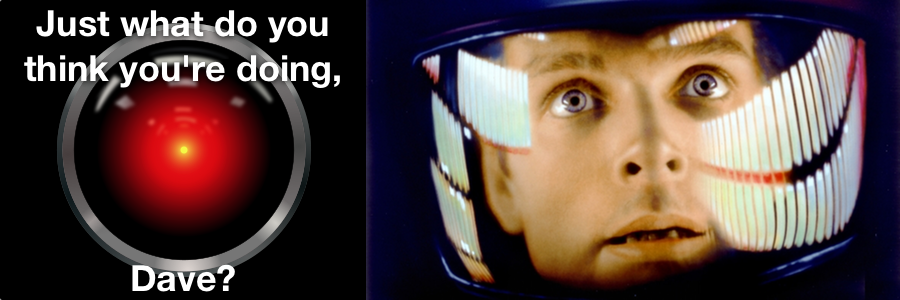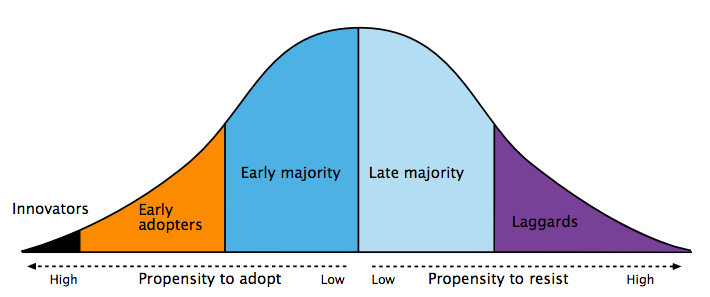It's okay to ask if someone will pay for your product or idea

Assumptions
This article is targeted at product people and those tasked with speaking with users or doing customer development. Although we talk about the "Entrepreneur" here, this includes Product Managers, User Researchers, Market Researchers, Business Development, Sales, etc...
A no-no question
We're frequently told to never ask potential users or customers if they'd pay for our amazing startup or product idea.
Why is that?
It is because potential users and customers won't be truthful to us.
Oh, why would they do that?
No, it is not malice. Potential users are not intentionally lying to us or trying to trick us into pursuing a bad idea or product. There are two primary reasons potential users are untruthful. Firstly, it is because potential users and customers are influenced by social pressures. Secondly, these potential users and customers are unable to accurately predict their own behavior.
Social pressure
Most people don't want to rain on someone else's parade. Why be that negative person and shatter someone's hopes & dreams for fame and fortune?
Put yourself in the user's shoes. During a pitch or customer development session the entrepreneur (aka, product manager or wishful thinker) has been so pleasant to you. This entrepreneur is clearly excited about the lottery ticket they are sitting on and is sharing the idea with you. In such a scenario, you (potential users) tend to feel obligated to provide a complement. Reciprocity in action.
You might respond with: "Yeah, that sounds like a great idea. Of course I'd buy it once it's ready". See what you did there? That was your good deed for the day. Look how happy the entrepreneur looks.
Perhaps you don't cave in to social pressures, much. You could say something like: "Hmm, that's an interesting idea. Maybe I'd buy it". There, you've kept your integrity. It was a terrible idea of which you had no interest, and you made it clear that you're not in love with it. But is that "maybe" being received with equal clarity by the entrepreneur? We can't be so sure.
Your future self
People cannot predict the future, let alone predict their own behavior. There are numerous studies and books written about how people mis-forecast their future actions.
People will make a certain prediction about their behavior, but at the time where that predicted action is to take place, their rational will change, or they won't even notice that the present event is the scenario they had predicted, and so will take an action, based on current information, that may not be congruent with their earlier selves.
So, given that someone cannot accurately predict their behavior, when presented with the question "Would you buy this product?", what are the odds the person will accurately predict whether they will buy or not? Time passes, minds change, circumstances change, expectations change, and so behavior changes.
Interestingly
Although people have been shown to be unable to predict their behavior, computers on the other hand are a different story. Much work continues to happen in Artificial Intelligence and progress is being made. Machine learning algorithms are able to more accurately predict human behavior than ever before. It's only a matter of time before... well...

Perhaps at some point we would be better off asking Hal to predict Dave's behavior.
Troubleshooting
Now that we've established that we shouldn't ask this question we can negligently move forward and ask “Would you pay for this product?”. But wait, why? Self selection! If you've bothered to read this far down (skimmed perhaps?). This article's title is not that interesting to most, but you picked it because you knew it sounded "off". The title sounds like something one shouldn't do and so you've raised your hand to say that, at the very least, you're familiar with why asking that question doesn't make sense. As you're reading this you've probably already jumped a step or two forward, trying to workout how the question can make sense. And this is important. Identifying bias and presumptions puts us all in a good place to see the challenges of predicting behavior. Thinking through scenarios of how posing this question can and cannot work exposes the benefits and risks of the question. By doing this we are able to mitigate the risks when analysing the response.
A bit of UX
The practice of User Experience (UX) Research uses many tactics to learn about users. Prior to embarking on a research study, many researchers like to write their assumptions and expectations down on paper. It sheds light on areas that may need validation. By thinking a scenario through you too are starting to dig deeper on a specific user interaction.
Context matters
So, now that you know that this sort of question shouldn't be taken at face value, and you know that people don't accurately predict their behavior, how can we move forward with this question?
1. Past behavior
Knowing more about the person you're speaking with can shed plenty of light about their ability to predict their own behavior, or at the very least, your ability to predict their behavior.
The best predictor of future behavior is relevant past behavior. #DrPhil
— Dr. Phil (@DrPhil) March 24, 2014
See that, said by Dr. Phil himself.
There are many studies that show correlations between past behavior and the probability of a future action taking place if those two activities share certain similarities. There are conditions and cases where this does not hold true, but this rule seems to hold under many conditions. So, how does this help us? Perhaps there are past behaviors that were conducted by the potential customer that align with the entrepreneur's big idea. In sales this part is called “qualifying the customer”.
Does the entrepreneur's product have any direct competitors or substitutes? Let's ask if the “prospect” has been, or is a current user of those alternatives.
If the entrepreneur is asking the prospect to “buy” why not ensure that this individual has bought similar products in the past? You can ask about other products or services the prospect is currently using. If this prospect has paid for similar product or services in the past, maybe they'll pay for the entrepreneur's product in the future. A believable affirming response is certainly more likely than asking potential user who has never paid for any similar products or services.
2. Rapport
When talking to someone it's important to build rapport so that you can get their most genuine responses. But wait, if they don't know about their behavior, why does this matter? It's important because although getting a “Yes, I would buy it” or “Maybe” are unreliable, getting a “No” shows a few things:
Telling someone “No” takes enough conviction to go against societal expectations. If someone feels comfortable enough with you to tell you “No” you can rely on them a bit more to tell you more unfavorable news… which is good, maybe.
And that leads into the next part, asking deeper questions. When someone is comfortable enough to give you a “No”, they would probably be comfortable enough to give you their real “Why”. Again, this may not predict real behavior, but the rapport present that allows for this genuine response can't be as easily identified when a “Yes” or “Maybe” are given as answers.
3. Is it a product or an idea, and who is receiving your message?
Let's ignore our knowledge of people's inability to predict their behavior. And let's forget about this whole rappor thing. People are different and behave differently to different inputs. Some people are dreamers and can work with intangibles. Others are more practical and like to see or speak about more tangible things. And of course there are many shades in between.
If a potential user can think in intangibles, and an entrepreneur pitches an idea (pre-product), then that potential user is in a better position to receive the pitch, and deliberate on it, as opposed to someone who needs to see an actual product before they can pass judgement, or hand over a credit card number.
This notion can probably be correlated to the adoption curve. Is the person being pitched an early-adopter or are they a laggard?

Early adopters are probably more likely to become excited for the entrepreneur's idea where-as legguards are almost certainly going to need more effort expanded on them to get them interested.
If the product or service is still in the idea phase it is even more critical to focus on early adopters and people who can think about intangibles and abstract ideas.
If you're going to ask if someone is going to pay for your product or service, you probably shouldn't ask someone with telltale signs of laggard behavior. If you can get a bunch of early adopters to respond positively to that question, then it is a good sign (to continue the questioning).
This speaks to one's ability to either sell a vision or sell a product. Selling the vision by describing the product and saying “Would you buy it” would require the entrepreneur to evaluate who they are talking to more closely.
It just got real
It's not uncommon for an entrepreneur (and many companies) to run with an idea, despite all the red flags, naysayers, and disbelievers. The entrepreneur ends up at a place with something to actually show for their effort. Perhaps it took a week to cobble together, or a year of nights and weekends, but if there's something to show, it changes the meaning of “Would you buy it?”. Having a product to show turns the question into a tangible one. The entrepreneur can now make a direct “ask”. “Will you buy it?” should force an honest answer as any under these circumstances, regardless if the potential customer is an early adopter or a laggard.
4. You've done this before
Have you done customer development before? If so, you're probably familiar with some of the ideas outlined above. If not, please see point 5.

Having done customer development before and asked this sort of question you probably know how inaccurate responses to it can be. You're a pattern finder and know that asking this question usually starts a much longer conversation.
5. You've read this far down
If this was all new to you and you've made it this far, than I suspect your spidey sense is tingling. You know asking if someone would pay does not give you accurate answers and yet you see how it can lead to a deeper conversation and to deeper learning.
It's in the follow up
To make the most of “Would you buy this product?” type questions, the real value is attained by asking follow up questions. Let's work backwards and see how this can translate in practical terms.
“No, I wouldn't buy this”. Great, we know they feel comfortable enough to give us a “No”, now let's learn about them and their world view by asking “Why?”. Ask them “what” they currently use to solve the problem you're trying to solve. Poke around that question and see where the conversation goes.
“Maybe I would buy this”. This is another opportunity to ask why. “What's your concern?”, “What is holding you back?” (keep in mind they can't predict themselves). But you can poke around their responses and continue the learning. Again, fall back to the “why” and “what”.
Yes, I would buy this”. Okay great. Your next response should be “I accept all forms of payment, even bitcoin, how would you like to pay?”. Well that certainly escalated! Even if your product is just an idea, that follow up question is where the rubber meets the road. If they give you a check, take it and hold onto it. Same goes for any form of payment. Now go find 9 more people to give you money. If you get to those 9, congrats, now get to work delivering on your promise. If they are not comfortable giving you any form of payment, see if you can collect a proxy such as a letter of intent, or take their payment information (securely of course). Promise to only charge them upon delivery. If you get pushback here, that's fine, please move on to asking the “why” and the “what” questions.

Take away
Asking potential customers if they would pay for a planned product is not a great question if you take the answer at face value. However, asking that question can yield many insights and lead to deeper understandings.
The entrepreneur/product-person should recognize who they are talking to, as well as the social context the conversation is taking place in.
Of course, before the entrepreneur/product-person has to figure all this out, perhaps he or she could have done a little problem discovery first.
Feedback & Questions
Is there a particular area or item you feel should be mentioned in this article? Let us know by emailing us at hello@confirmkit.com.
If you've found this article useful please share. 🙏
Want to know when the next article is published?
Add your Email and we'll keep you in the loop of future interviewing-related publications and ConfirmKit news. Big things are in the works!